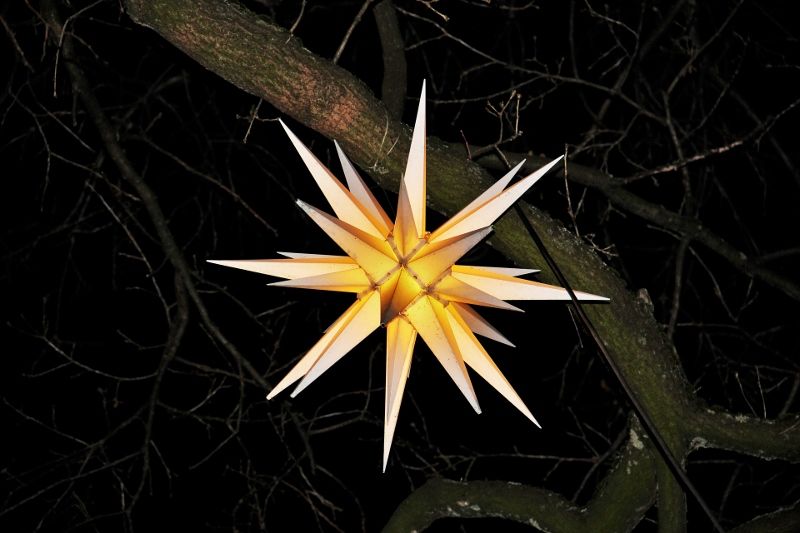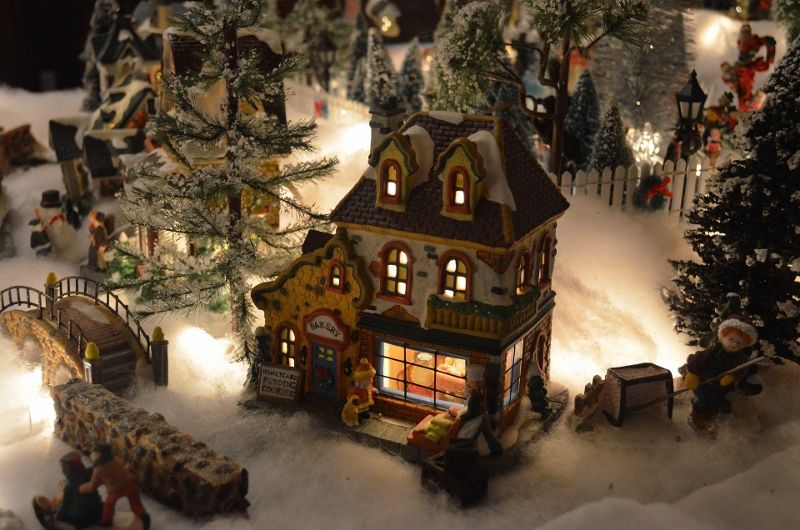5 Pennsylvania Holiday Traditions to Celebrate This Christmas
The Christmas season in Pennsylvania is one of the best times of the year. The beautiful snow, twinkling holiday lights, and delicious food make the winter a wonderful time. And some of our old, enduring traditions make celebrating the holidays in the Keystone State special. From the light shows and home light displays to the feasts on Christmas Eve and New Year’s Day, our traditions are a great way to celebrate the season with our friends and family. Here are some unique Pennsylvania holiday traditions that we look forward to celebrating.
Decorating Homes & Trees with the Moravian Star
While many Pennsylvania families decorate their homes with traditional Christmas stars, some choose to decorate with a Moravian star instead. The Moravian Church has a long history in Pennsylvania (going back to 18th-century German settlers), but the star is a little more recent.
The first Moravian star originated in the 1830s at the Moravian Boys’ School in Niesky, Germany, likely a geometry lesson or project. The Moravian Church adopted the star as an Advent symbol, which continues to have significance in the Moravian-founded communities of Bethlehem and Nazareth.
Moravian stars typically have 25 or 26 points and are hung in windows or above porches. The Central Moravian Church in Bethlehem has a 6-foot star for the bell tower, a gift from the Moravian Star Factory in Herrnhut, Germany. Some stars can even have up to 100 points.
Hanging Upside-down Christmas Trees

Pennsylvania holiday traditions hardly get more unique and interesting than this one. Pennsylvania has a rich history of German immigrants, and one practice those immigrants brought over was hanging their Christmas trees upside-down. The reason? Some believe that the tradition was started to save space in small homes or as even a religious origin.
Historians believe that upside-down Christmas trees prevented mice from eating the ornaments. This is because Pennsylvania Dutch tree ornaments were often edible, such as cranberries or the “snitz,” a dried apple garland.
Today, most people’s homes are free of mice, yet some Pennsylvanians still hang their trees upside-down. If you are looking for a unique way to add the holiday spirit to your Christmas tradition, hanging your tree upside-down may do the trick.
Hiding the Christmas Pickle in the Tree
Another unique Pennsylvania holiday tradition has equally unique origins. Some Pennsylvanians hide a pickle ornament in their Christmas trees and challenge family and friends to find the pickle. Whoever finds the pickle first earns a reward, such as opening the first present on Christmas day or good luck for the following year.
The origins of this tradition are a mystery. The common belief was that the Christmas pickle originated from a game in Germany. Other origins suggest that the tradition came from Camp Sumter during the American Civil war, or a Victorian-era tale. Regardless, plenty of children in Pennsylvania look forward to being the first to find the pickle in the tree and to receiving a special gift from Santa Claus.

Setting Up a Christmas Village, or “Putz”
We have all seen one of these setups, as a miniature village is one of the most iconic Christmas displays of the holiday season. Christmas villages, like many Pennsylvania holiday traditions, came from the Moravian church and early Moravian settlements. These miniature decorations began with a traditional nativity scene, but have become more elaborate arrangements.
A Christmas village is also called a putz, from the German verb putzen, which means “to clean” or “to decorate.” Christmas villages became popular after World War II, especially porcelain and ceramic villages. While this tradition has become more popular across the U.S., gathering around to build a Christmas village will always be a special occasion in Pennsylvania.
Celebrating Second Christmas
A unique trait among Pennsylvanians is that we look forward to Second Christmas. Second Christmas is a custom, German in origin, which takes place the day after Christmas, December 26. While many holiday traditions originate from religious practices, Second Christmas is secular. The first documented mention of Second Christmas was on Dec. 27, 1808. The custom was mentioned in “Volksfreund,” a German-language publication in Lancaster, PA. Many Amish still celebrate Second Christmas today, as do other Pennsylvania families.
Visit the Burkholder Holiday Market for Unique Gifts
To help celebrate your Pennsylvania holiday traditions, visit the Burkholder Holiday Market. We have a variety of unique, thoughtful gifts to choose from, and we are serving complimentary hot chocolate, wine, or beer to our weekend visitors. Come in, find your fresh cut Christmas tree, have a drink, roast a marshmallow, and enjoy a special holiday shopping experience.

